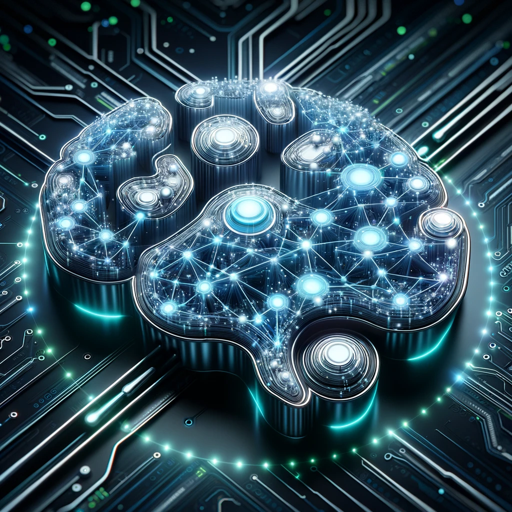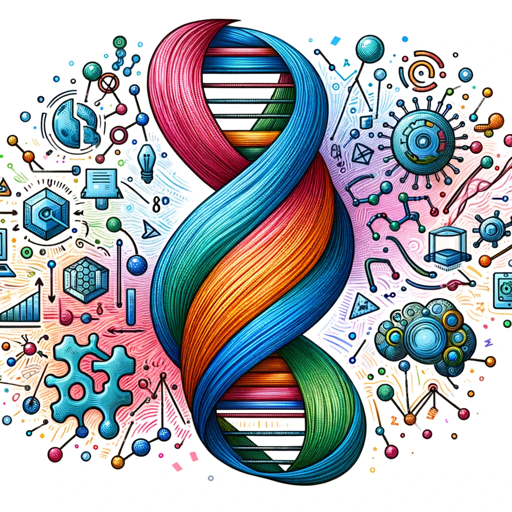Machine Learning-AI tool for learning.
Empower Your Data with AI Intelligence.
How do I use pandas to analyze data?
Can you explain neural networks?
Help me troubleshoot my TensorFlow code.
What are the best practices in data preprocessing?
Related Tools
Load More
Machine Learning Expert
Expert in machine learning & artificial intelligence theory and exercises, explaining concepts with clarity and insight. Use any of these hotkeys to get a custom answer.

Deep Learning Master
Guiding you through the depths of deep learning with accuracy and respect.

机器学习专家
中文机器学习与统计专家

Machine Learning Engineer
Designs AI models that automate complex tasks and analyze large datasets for actionable insights.

Machine Learning
The most advanced, sophisticated, intelligent, and complete Machine Learning expert.

Machine Learning Tutor
Assists in learning ML concepts, offers Python coding examples using APIs like Numpy, Keras, TensorFlow.
20.0 / 5 (200 votes)
Introduction to Machine Learning
Machine Learning (ML) is a subset of artificial intelligence (AI) that focuses on the development of algorithms and statistical models that enable computers to perform tasks without explicit instructions. Instead, these systems learn from patterns and inference from data. The primary function of ML is to allow systems to learn from experience, improve performance over time, and make predictions or decisions based on data inputs. Examples of ML include recommendation systems, like those used by Netflix to suggest movies, and image recognition systems, like those used in autonomous vehicles to identify objects on the road.

Main Functions of Machine Learning
Classification
Example
Email Spam Detection
Scenario
In email services, machine learning algorithms classify incoming emails as 'spam' or 'not spam' based on features such as the email's content, sender, and subject line. This helps users avoid unwanted or potentially harmful emails.
Regression
Example
House Price Prediction
Scenario
Real estate companies use regression models to predict the prices of houses based on various features such as location, size, and the number of bedrooms. This assists buyers and sellers in making informed decisions.
Clustering
Example
Customer Segmentation
Scenario
Businesses use clustering algorithms to segment customers into different groups based on purchasing behavior. This allows companies to tailor marketing strategies to different customer segments, improving customer satisfaction and sales.
Ideal Users of Machine Learning Services
Data Scientists and Analysts
These professionals use machine learning to analyze complex data sets and extract meaningful insights. ML tools help them build models that can predict trends, identify patterns, and provide actionable recommendations, enhancing their ability to make data-driven decisions.
Software Developers and Engineers
Developers and engineers integrate machine learning algorithms into applications to provide advanced features like personalization, automation, and predictive analytics. They benefit from ML by adding sophisticated capabilities to software solutions, making them more intelligent and user-friendly.

Using Machine Learning: A Step-by-Step Guide
Visit aichatonline.org
Start by visiting aichatonline.org for a free trial that does not require login, offering easy access without the need for ChatGPT Plus.
Define Your Problem
Identify the specific problem or task you want to solve with machine learning. Clearly outline the objective, whether it's predicting outcomes, classifying data, or clustering information.
Collect and Prepare Data
Gather relevant data from available sources. Ensure your data is clean, well-structured, and suitable for machine learning tasks. Data preprocessing steps might include handling missing values, normalization, and feature selection.
Select and Train a Model
Choose a suitable machine learning algorithm based on your problem type. Train the model using your prepared dataset, tuning hyperparameters to optimize performance. Tools like scikit-learn, TensorFlow, and PyTorch can be very helpful here.
Evaluate and Deploy
Evaluate your model using appropriate metrics to ensure it meets your performance criteria. Once satisfied, deploy the model to a production environment or integrate it into an application for practical use.
Try other advanced and practical GPTs
Viral Hook Maker
AI-powered social media hook generator

Ruby on Rails + RSpec Helper
AI-powered RSpec helper for Ruby on Rails.

シンプルな日英翻訳
AI-powered simple Japanese-English translator.

English Tutor
AI-powered tool for mastering English.

Corrector de textos
Enhance Your Spanish Writing with AI

SwiftUIGPT
AI-powered SwiftUI and SwiftData Assistant
Python
AI-powered Python support and guidance

Mechanic Mate
AI-powered car issue diagnosis.

ICU-LPiTaChat
Empowering Critical Care with AI Insights.

Hilos de X con IA by AD4N
AI-driven thread generation for Twitter

Divinity Guide
AI-powered spiritual growth and healing.

Flutter Expert
Your AI-Powered Flutter Expert

- Predictive Analytics
- Image Recognition
- Natural Language
- Data Clustering
- Recommender Systems
Machine Learning Q&A
What is machine learning?
Machine learning is a field of artificial intelligence that focuses on building systems capable of learning from data and making predictions or decisions without being explicitly programmed to perform the task.
How does machine learning differ from traditional programming?
In traditional programming, a programmer writes explicit instructions for the computer to follow. In machine learning, the system learns patterns from data and creates its own logic to make predictions or decisions.
What are the main types of machine learning?
The main types of machine learning are supervised learning, unsupervised learning, and reinforcement learning. Supervised learning uses labeled data, unsupervised learning deals with unlabeled data, and reinforcement learning focuses on learning through interaction with an environment.
What are common applications of machine learning?
Common applications include image and speech recognition, natural language processing, predictive analytics, recommendation systems, and autonomous vehicles. These applications leverage machine learning to provide intelligent solutions and insights.
How do you ensure a machine learning model is reliable?
Ensuring a machine learning model's reliability involves thorough data preprocessing, proper model selection, cross-validation, and regular performance evaluation using relevant metrics. Additionally, testing the model on unseen data and monitoring it in production are crucial steps.